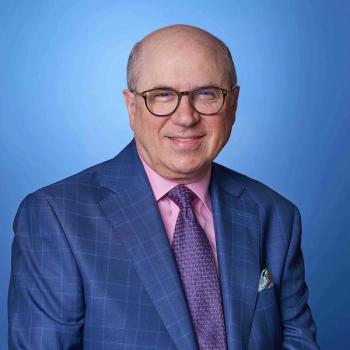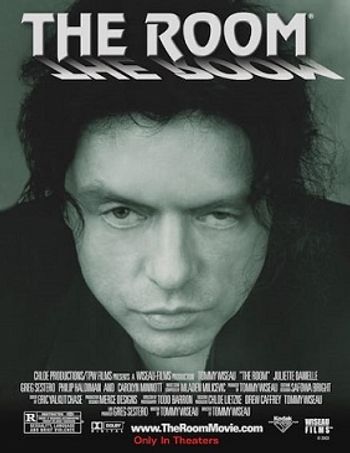
- Psychiatric Times Vol 36, Issue 9
- Volume 36
- Issue 9
The Changing Face of Psychiatry Over 50 Years: Remembering Integrities Lost and Found
With the goal of making psychiatric care more available, accessible, and affordable while maintaining the highest standards...comes the challenge of accomplishing this with limited resources.
We remember the goal: making psychiatric care more available, accessible, and affordable while maintaining the highest standards. We remember the challenge: accomplishing this with limited resources. What we forget is the role played by our bad habits back then, our unverified claims of effective treatment, our poor record keeping and interminable therapies, and our readiness to opine about complex political matters as if we didn’t have a political agenda of our own, to name a few. Medical Handlers would be calling the game from here; they’d be the ones dealing the cards.
By the 1990s business and political leaders were on board and licensing authorities, agency administrators, state regulators, and health maintenance organizations in place, almost none medically trained, while a fiction of a timeless medical authority provided legal and reimbursement cover. Our role as psychopharmacologist-employee began expanding. Our other psychiatrist responsibilities began transferring to social workers, psychologists, and nurses who picked up that slack.
Adjusted schedules and adjusting relationships
More and more psychiatrist-therapists who formerly prescribed medications for symptom relief and optimal functioning were now salaried psychopharmacologist-employees seeing patients for 15 or 20 minutes and writing prescriptions lasting months to make time for increasing caseloads. Close monitoring for medication tolerance, effect, and adverse reactions was no longer feasible and a therapy relationship with patients impossible. The assigned therapist or counselor over whom the psychiatrist had no authority meanwhile was surreptitiously contributing to a stealthily dysfunctional silo-like alignment of the institution’s organizational tree that had the effect of souring intra-institutional collaboration.
Our new language of smoke and mirrors
We psychiatrists, for whom the clarity of words and their meaning traditionally held center stage, were now finding ourselves helpless to challenge an emerging vocabulary that peddled misinformation and bias and that compelled us to become unwitting carriers of misleading euphemisms and bogus concepts.
1) The patient as consumer. With medical practice now a business and with profit the dominant ethic, truth-in-advertising was monitored, and placebo fell out of use. Patients were now consumers, presumably to spare them the indignity of the label, patient, and doctors became service providers, to help dispel their elitist image. However, this new product labelling process had the unintended consequence of what was jokingly called the medicalization-of-life, where half the population would one day be in therapy with the other half. Activities, from art to exercise to assistance finding work to assistance in obtaining affordable housing, began appearing, not as part of a service plan but as part of a treatment plan, while teachers of language, art, and exercise were beginning to self-identify as language therapists, art therapists, and exercise therapists.
Behavioral health replaced mental health, signaling that it was how a person behaved-not how he or she thought or felt-that became the core issue requiring attention (see #4 Chemical restraint).
2) Blurred boundaries. Social workers began suggesting medications and dose changes as did case managers in lieu of reporting observations-their particular asset-with the harried prescribing doctor dutifully if mindlessly making the recommended medication adjustments. Case managers and coordinators identified adverse medication reactions as allergic reactions, which then became part of medical records and, not surprisingly, tilted subsequent emergency department (ED) interventions accordingly. Also, they not uncommonly copied doctors’ orders incorrectly with patients receiving incorrect doses, even incorrect medications. Quality control was nowhere; empowerment overreach-everywhere.
3) The fiction of confidentiality. When prescriptions were phoned in, one had to provide evidence of medical necessity to ensure payment, and for that the insurer had to know the medication’s purpose. But, because the word purpose was unwisely considered interchangeable with diagnosis by our non-medical handlers, the hospital and clinic staffs, including doctors and clerical staff, were routinely and inappropriately directed to phone in diagnoses, a personal detail neither required nor requested and in clear violation of patient confidentiality. The irony was seeing hospital and clinic walls and elevators replete with signs: “Patient Confidentiality Is Our Priority.”
4) Chemical restraint. A lawyer’s metaphor applied in his courtroom argument against forced antipsychotic medication for his client (a case he won), along with his glib description of psychotic talk as creative speech, became enshrined in case law in Massachusetts.1 As a result, the concept of chemical restraint took on a mantle of literal reality, even among psychiatrists.
Most psychiatrists, of course, understood that antipsychotic medications don’t act as physical restraints, they restore one’s thinking and the person does the restraining him or herself. But we nevertheless abetted the spread and legitimization of this false belief by applying the term, chemical restraint, in our practice and on official medical forms.
How could such endorsement of a blatantly bogus concept, along with its misleading language, not promote the perception that a psychiatric hospital’s principal objective was managing risky behaviors and, as such, was an instrument of social control? And how could such a perception that we psychiatrists were essentially managers of behavior for social control not suggest a political agenda on our part? More than a few former patients had already begun viewing psychiatry as dangerous, psychiatrists as their enemy, and themselves as survivors.
5) Contracts for safety. This important and useful contract, a promise not to hurt oneself, signed by a patient feeling suicidal, along with his or her trusted therapist, was a sensible and effective intervention to help that desperate person keep going, hang in there until the next appointment. How was expecting such a distressed person to sign such a contract with a total stranger in an ED anything more than a gesture to protect emergency staff and the hospital from liability?
6) Informed consent. And then this orphan member of our psychiatrist family to-do list. This term, with origins in a patient’s permission for a surgical operation, meaning for an invasive procedure, translates delicately to psychiatric practice, which features no invasive procedures let alone hands-on contact, just questions, insights, suggestions, and prescriptions. The relevant part of that particular doctor-patient interaction and relationship centered on our taking into account our patient’s ability to retain and process information, especially details about the medication and its effects.
That’s why consent in psychiatry, especially psychopharmacology, is essentially a process, an ongoing patient learning experience. But it rarely is. There’s no time. Instead it’s a confusing form that, some insist, the doctor signs and the patient keeps, while others insist it’s a form the patient signs and the doctor keeps. Either way it’s a one-shot affair and suspiciously like an exercise in covering one’s back (the doctor’s) and endorsing empowerment (the patient’s). What it is not is a trust-building collaborative relationship.
7) Signing off. A requirement that certain medications prescribed by Massachusetts doctors had to be independently approved as appropriate led to doctors writing down their orders and then, further down the page, checking a box indicating that he or she approves of the action just taken, an action as humiliating as it is ridiculous.
Doctors were expected to sign-off this way on another doctor’s meds in the absence of an identified target-symptom or a form filled out by a case manager without verification for accuracy. We were expected to sign off on involuntary hospitalization forms that had information that failed to meet the legal standard for involuntary hospitalization. We were expected to sign off on medical affidavits despite disagreeing with additional content a lawyer added, and all “under pain and penalty of perjury.” We were expected to sign off on approving things we knew nothing about (eg, ability to drive safely), sign off on meetings we never attended, and cases we never reviewed, and we were expected to make judgment calls on matters we had no way of judging (eg, capacity to sit on a jury, handle funds, use public transportation, write a will, or learn civics). It’s what team players did.
We ad-libbed (eg, in admitting a patient under commitment and being directed, as admitting officers, to check one of two boxes on the admission form to verify that the patient had either willingly signed in or had refused to sign in following an explanation of his or her rights). What do you check when the patient arrives unconscious? We asked. “It doesn’t really matter,” we were told, “No one ever reads this,” or “It’s only a signature.” Right.
We sensed that if we didn’t sign the forms as directed the job would be transferred to some non-questioning non-psychiatrist who’d be a compliant team-player. Integrity should always trump convenience, but livelihood has a way of trumping integrity.
8) Observable symptoms, measurable progress, and the revolving door. For payment of services there had to be improvement goals, and for evidence of improvement there had to be observable and measurable changes, observable symptoms, as our handlers put it. So, in place of asylum and hospital sanctuary there were now half-way houses with a care-system aimed, not at relapse prevention but at interminable progress, meaning improvement without end.
This, of course, led to hapless patients pushed to the point of their incompetency, following which patients would inevitably end up re-hospitalized. (I suspect that that process contributed to, if not created, the system’s revolving door phenomenon.)
9) Contaminating legalities. At that time, there emerged with greater intensity the operational fiction that if something is not written down it officially never happened. Conversely, if something is written down it did happen; encouraging, of course, bogus notes in records while promoting defensive practice and a culture of indifference.
10) Gaming the system. No surprise that some people suffering mental illness whose behavior fell short of behavioral criteria for hospital care (ie, danger to oneself or others or inability to care for oneself) learned to threaten danger as their key to entering a hospital for safety, relief, and healing. No surprise that that behavior was labelled, gaming the system, a notion that, ironically, both empowers and diminishes that erstwhile patient while sadly missing the point.
An unexpected and ironic dividend
Over the years we psychiatrists have discovered and demonstrated an aptitude for psychopharmacology and for contributing to its reach and effectiveness. About the placebo, it remains a transference presence. Its effect is noted and respected, but we no longer prescribe the placebo. We are the placebo.
Disclosures:
Dr Climo is the author of Psychiatrist on the Road: Encounters in Healing and Healthcare, an account of his Locum Tenens experience.
References:
1. Rogers v Commissioner of Department of Mental Health. 390 Mass. 489; 1983.
Articles in this issue
about 6 years ago
How We Eatabout 6 years ago
How Anxiety and Habits Contribute to Anorexia Nervosaabout 6 years ago
Interoception in Eating Disorders: A Clinical Primerabout 6 years ago
Closing the Research-Practice Gap in Eating Disordersabout 6 years ago
Mixed Features, Suicide, and Adolescents at Riskabout 6 years ago
How Catastrophe Can Change Personalityabout 6 years ago
Fasten Your Seatbeltsabout 6 years ago
Mergers and More Rock the Pharmaceutical Industryabout 6 years ago
A Drug’s Journey: From the Pill Bottle to the ToiletNewsletter
Receive trusted psychiatric news, expert analysis, and clinical insights — subscribe today to support your practice and your patients.














